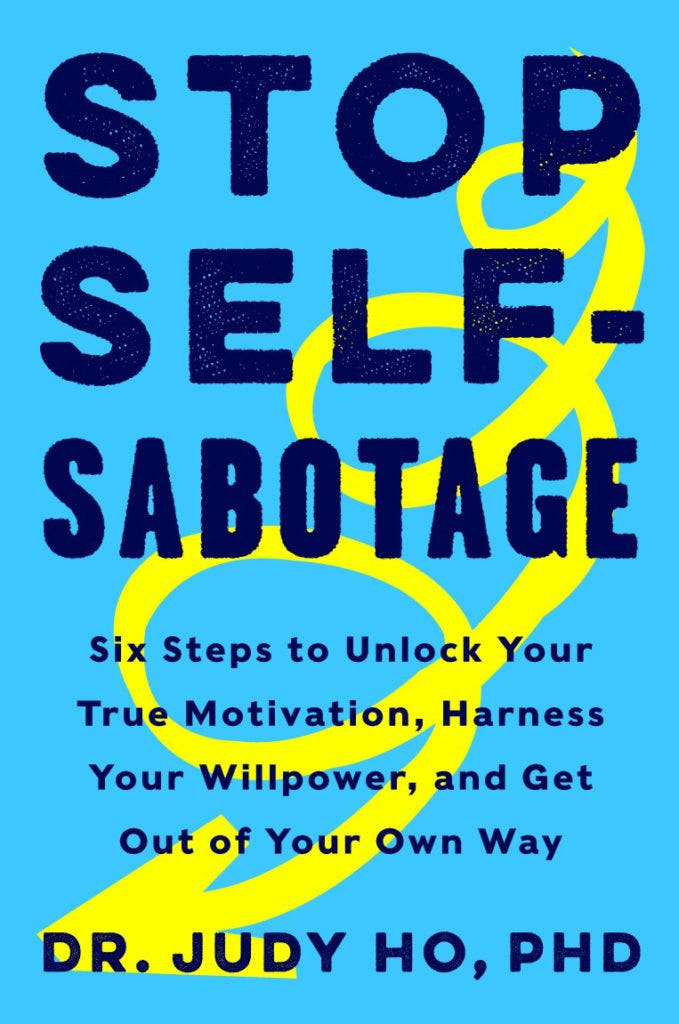Our Own Worst Enemy: Overcoming Self-Sabotage With Dr. Judy Ho

Dr. Judy Ho, a practicing neuropsychologist, tenured professor and co-host of “The Doctors” and “Face the Truth,” believes that humans all have something in common (aside from 99.9 percent of our DNA). Every single person on this planet, according to Ho, is guilty of self-sabotage, a phenomenon she defines as getting in our own way despite our best intentions.
Following two decades of research and clinical practice, Ho has concluded that most of us recognize when we are self-sabotaging but do nothing to change our destructive patterns. This realization inspired her to write “Stop Self-Sabotage: Six Steps to Unlock Your True Motivation, Harness Your Willpower, and Get Out of Your Own Way” (Harper Wave, 2019), a practical playbook for eliminating repetitive behaviors that interfere with our ability to create the life we desire and deserve.
We sat down with Ho to chat about why we are often our own worst enemy and how we can retrain our body and mind to overcome self-sabotage in order to be the best version of ourselves.
It’s biological

Ho says that our propensity toward destructive, recurring behaviors is rooted in evolution. She explains that while the threats to our ancestors were largely physical (e.g., a saber-toothed tiger) and our modern-day threats are largely emotional (e.g., what if X happens), our brains and bodies respond in the same way because we haven’t evolved to distinguish between the two.
As a species, we are driven by two survival instincts: attaining rewards and avoiding threats. When those two elements are balanced, we are in a sound mental state. But sometimes we focus too much on the threat part and not enough on the reward element, and the former becomes the sole driver. “That’s when the self-sabotage switch turns on,” Ho says. When the switch gets flipped, Ho believes the negative thoughts can often be traced to one of four underlying causes: low self-esteem, internalized beliefs, fear of the unknown and an obsessive need for control.
People with low self-esteem self-sabotage because they don’t think they deserve better. Those who fall prey to internalized beliefs are often limited by something their parents intentionally or unintentionally taught them about the world that may or may not be true. While most people dislike change, Ho says that some are more predisposed to avoiding it, which leads them to “live the same life over and over again even if they’re not fully satisfied.” Perfectionists self-sabotage in situations in which they anticipate they will not have full control over the outcome.
Becoming conscious

As we repeat the same negative thought patterns over long periods of time, they become a largely unconscious hum influencing our daily choices. Ho believes we must “take those thoughts back into the conscious world” to form new thoughts or change our relationship with those thoughts.
To form new thoughts, Ho suggests writing down a more balanced version of the negative thought. For example, “I have failed at presentations in the past, but that doesn’t mean I am going to fail today.” On days when generating a new thought just doesn’t seem possible, Ho says to simply change how we react to the thought. She suggests labeling the thought as “just a thought,” not necessarily the unchangeable, definitely-going-to-happen truth. Doing so helps us have the thought but not let the thought affect our emotions.
In addition to recognizing and changing thoughts, Ho says we should pay attention to the situations that trigger them and the cognitive distortions that lie within them (e.g., black-and-white thinking, “should” statements and catastrophizing). Recognizing triggers and distortion patterns allows us to address and change the thoughts and resulting behaviors more quickly and effectively.
Assessing values

According to Ho, the deeper roots of self-sabotage often lie in misguided motivations that aren’t based on personal values. We compare ourselves to others and set goals that are theirs, not ours. Faltering on a specific goal, struggling to stay committed or reaching the goal and then feeling empty are signs that our goals and values are not aligned.

Rx for lasting change
The last step for preventing self-sabotage that Ho outlines in her book involves creating a “blueprint for change,” a detailed, one-page prescription on how to implement everything the reader has learned. The document serves as a reference tool when self-sabotage feels imminent. Ho likens the blueprint to a vision board, but she is quick to add that it’s far more realistic and practical.
Realistic and practical are apt descriptions for “Stop Self-Sabotage” overall. Ho sought to create an easy, action-oriented way to take stock of our self-destructive thoughts, misguided motivations and undesirable behaviors. She has succeeded, perhaps because she has taken a page—literally—from her own book and found a way to streamline her own path to success. She is confident, and now we are confident post-conversation with her, that everyone and anyone can do the same.
For more on Dr. Judy Ho and “Stop Self-Sabotage,” visit Ho’s website. Stop by her wellness blog for her takes and tips on not only self-sabotage but also self-improvement, motivational hacks, and health and fitness.
Video credit: FilmColoratStudio, Getty Images
Photo credit: Dr. Judy Ho; SDI Productions, Getty Images; Ishan Gupta, Unsplash; Brad Neathery, Unsplash